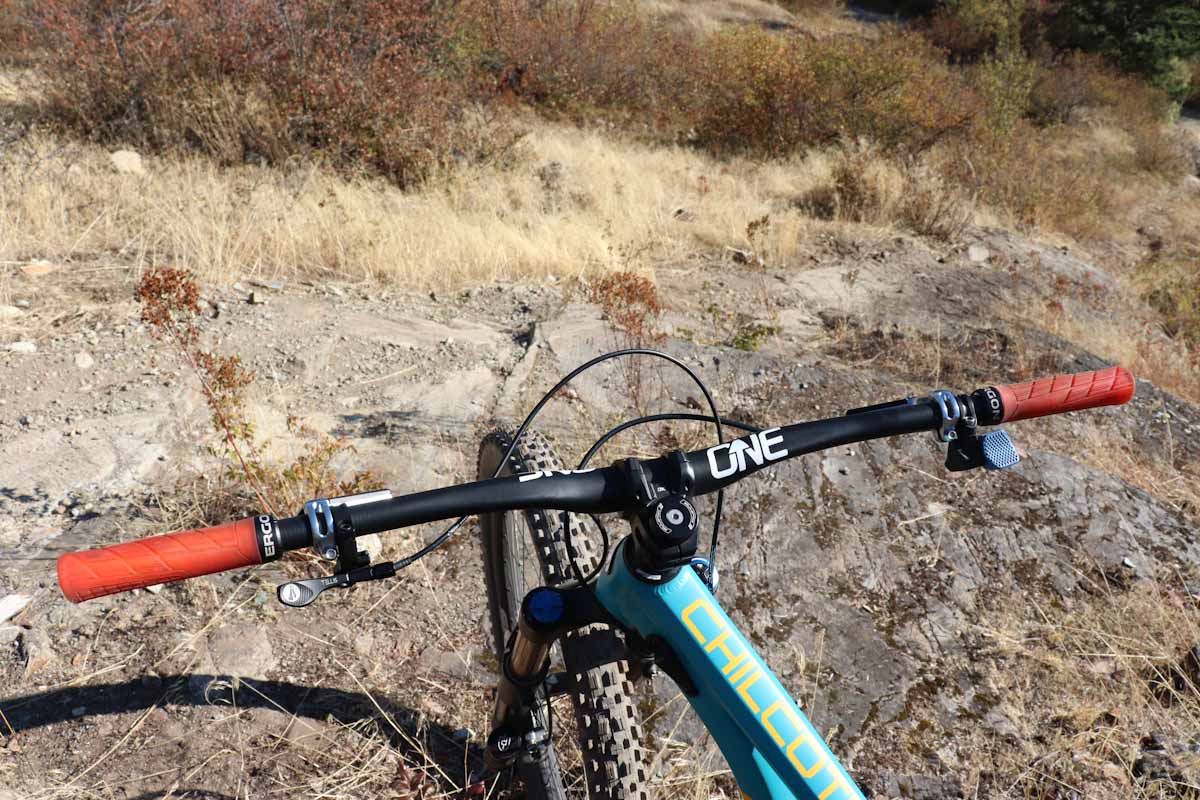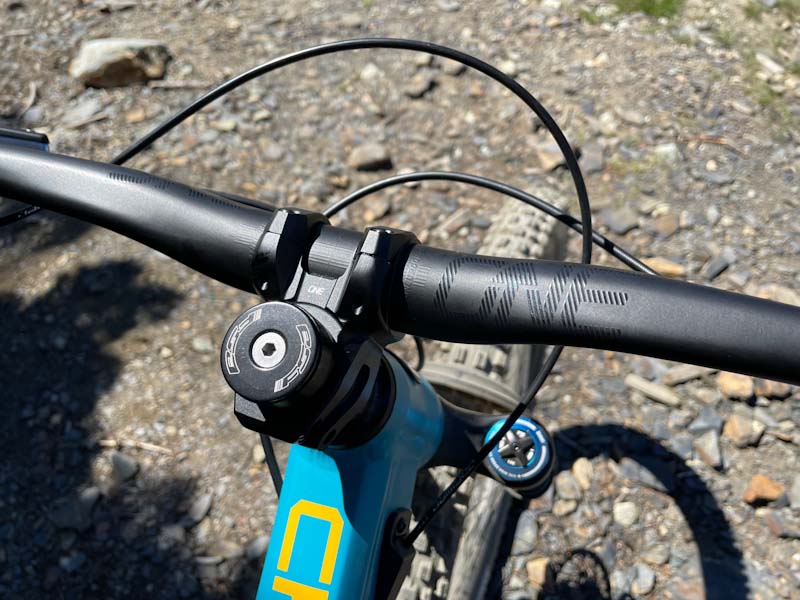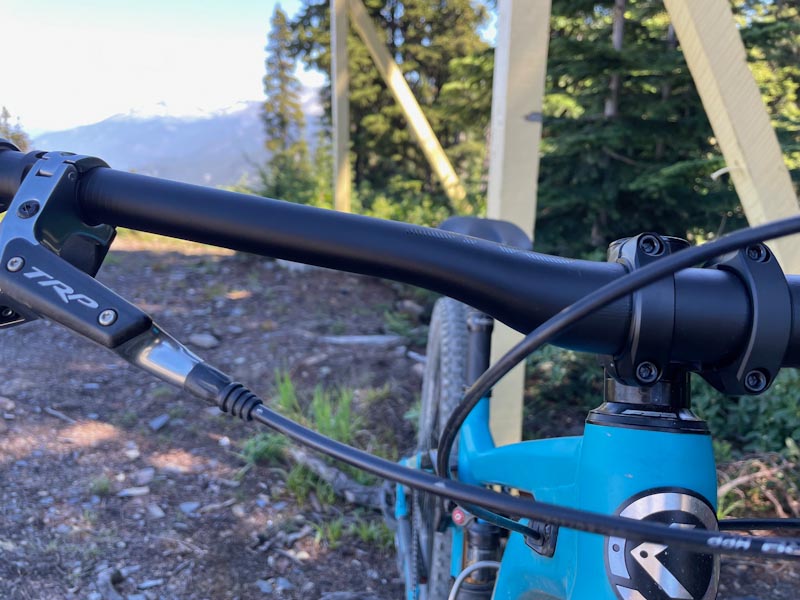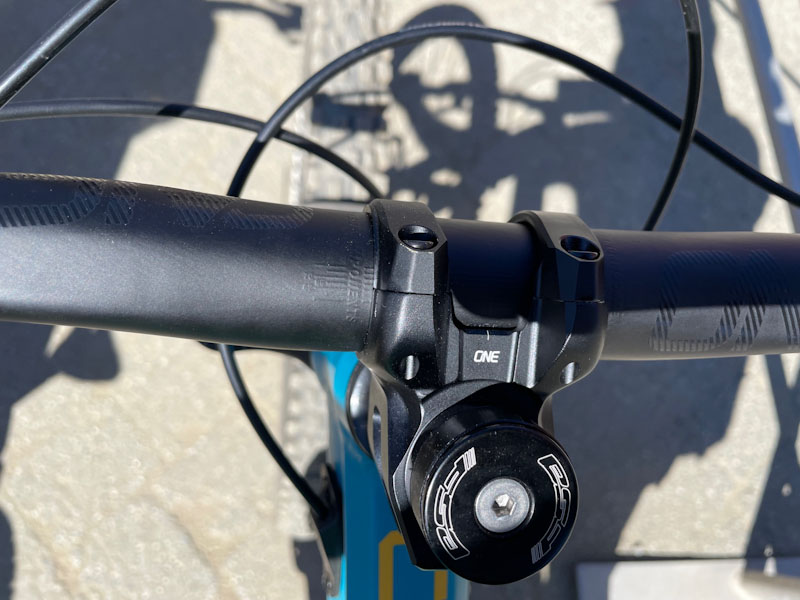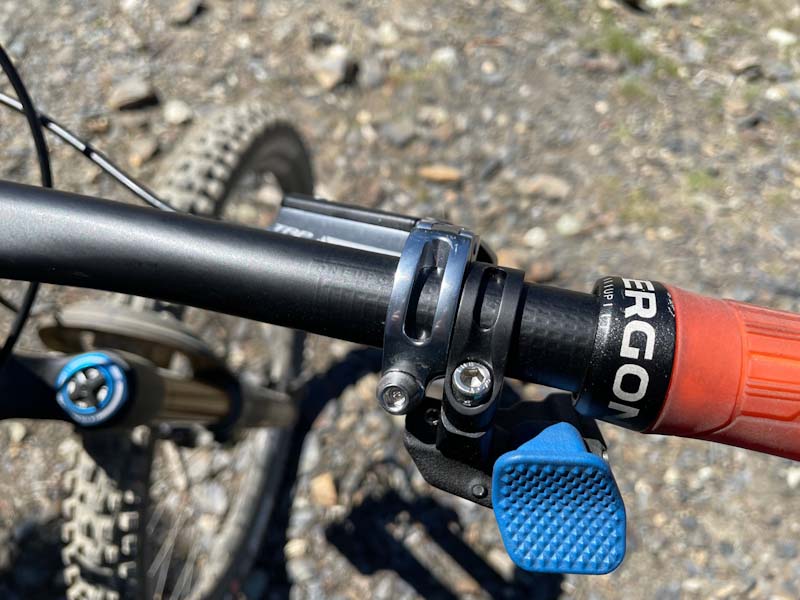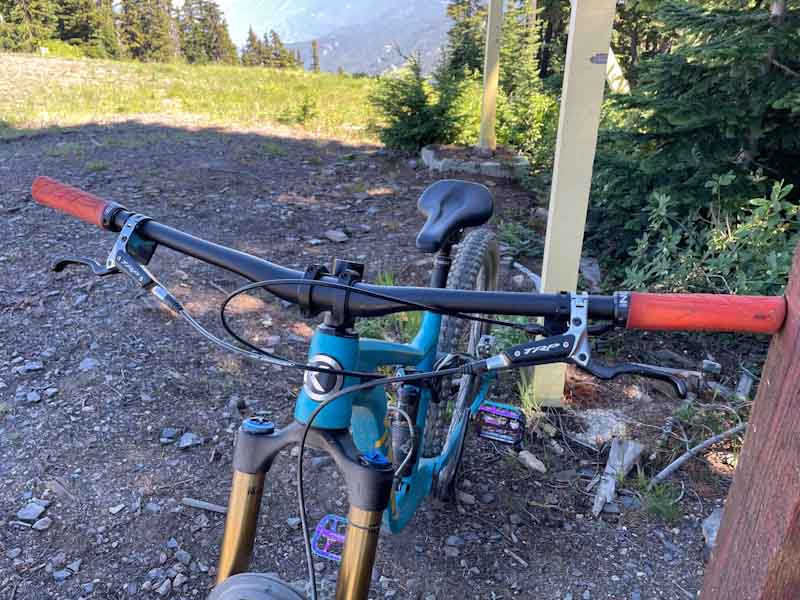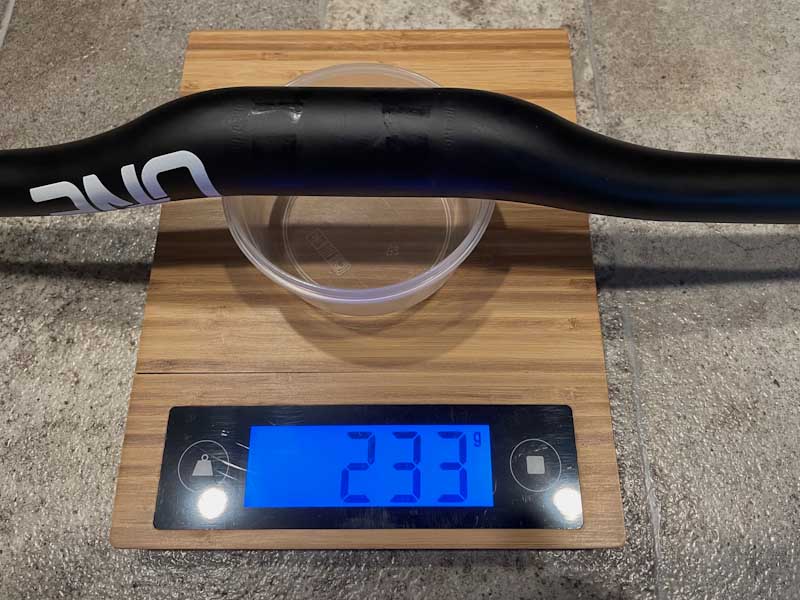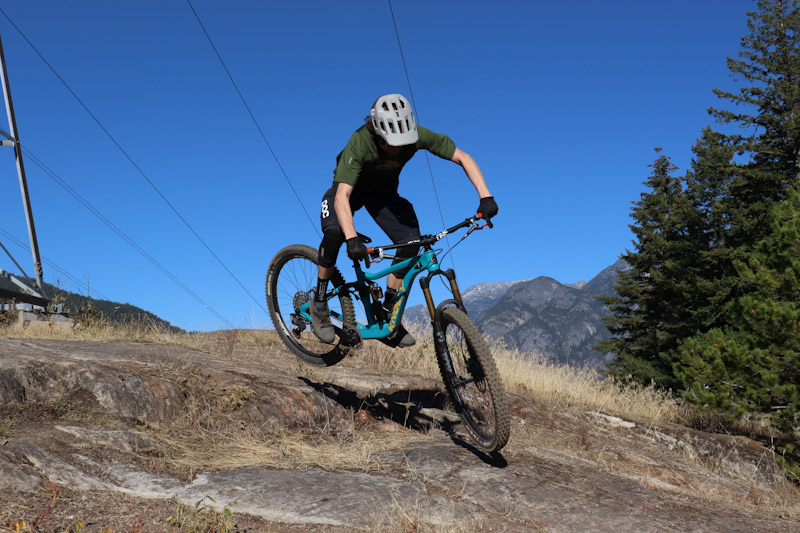When I first heard about carbon fiber bike parts, I thought the main benefit of this material was weight savings. While that’s certainly true, I’ve since learned how tunable carbon fiber can be. When MTB components like rims and handlebars went to carbon, we started seeing carbon parts that were touted for their stiffness, compliance, or strategic combinations of both. Conveniently, they still often wind up being pretty light too.
OneUp Components’ Carbon Handlebar maximizes the benefits of carbon’s compliance and strength, yet they come in at a comparable weight to other brands’ carbon bars. While the bars were designed to reduce arm fatigue, they have a super-thick clamp area to resist crushing and are OK for any rider, with no specified weight limit.
During Crankworx Whistler I met up with Quinn from OneUp Components for some bike park laps. We swapped my personal bike’s aluminum bar with the carbon handlebar for some back-to-back testing on the park’s rough and fast trails. I got to keep the handlebar for a while after Crankworx, so I spent the next few weeks riding trails with it. We’ve also included it in our guide to the best mountain bike handlebars.
OneUp Carbon Handlebar – Construction:
The Carbon Handlebar is obviously made from carbon fiber, and it boasts a unique (and patented) shape that provides vertical compliance, but not horizontal compliance. This design keeps the bar from flexing when you’re pulling back on it, but allows it to help absorb bumps and vibrations from the trail. The goal of the Carbon Handlebar is to reduce arm pump and fatigue rather than provide a noticeably softer ride, so they’re designed to flex just enough to accomplish that task.
Looking at the handlebar from above you can see flat spots where the bar tapers and sweeps back from the clamp area to the grip area. If you look from behind the handlebar, you can also see how the bottom is flattened out in the same areas. You may also notice OneUp kept the 35mm clamp area quite narrow to encourage a little flex. None of this is very obvious without a close look, so the bars don’t look unusual on a bike. OneUp claims this bar offers 21% more vertical compliance than competitors, yet maintains 28% better steering stiffness.
One interesting thing to know about this bar is that it’s intended to be set up matching your bike’s head tube angle – apparently it feels odd if the bar isn’t flexing at the same angle as your fork is compressing. Thankfully OneUP has made this easy (somewhat…), with markings on the clamp area so you can align the bar with whatever angle matches your bike.
However, there are two reasons it’s ‘somewhat’ easy… number one is the markings are tiny and not easy to read unless light hits them just right! The aesthetic subtlety is nice, but I wouldn’t blame OneUp for making them a bit easier to see. Number two is that the bar markings are designed to align with OneUp’s stem clamp opening (as seen in my photos). If you don’t happen to run OneUp’s stem with the bar, there’s no reference point to line up the degree markings with, so it’s probably best to use a tool to check the angle.
The bar also has markings for cutting down the width (from 800mm to 750mm), and a slight texture under the grip/lever areas. This pattern can help with positioning your clamps and likely provides a bit of grip for your levers to grab onto.
The wall thickness in the carbon handlebars’ clamp area is super thick; while OneUp lists a torque spec of 6Nm for stem bolts, Quinn assured me they will not be easily crushed. One thing to note is this handlebar is not compatible with bar ends or grips that have a single outer clamp.
As for shape, OneUp gave the carbon handlebar a 5° upsweep and an 8° backsweep. I was riding a 20mm rise bar, but there is also a 35mm rise version. Both come at 800mms wide with a 35mm clamp diameter.
OneUp also makes an eMTB version of this bar, which offers a little more vertical compliance than the regular bar and has grooves and holes for routing drive system wires cleanly (designed for Shimano systems). The eMTB bar offers a softer feel because e-bikers often spend more time in the saddle than non-assisted riders, and could suffer more arm pump throughout a lengthy ride.
OneUp lists the weight of the 20mm rise bar at 220g (and 225g for 35mm rise). My scale showed the 20mm rise version at 233g with decals. Despite their unique shape, thick clamp area and horizontal stiffness, these bars match the weight of several carbon competitors.
Ride Impressions:
During Crankworx, Quinn and I rode three long laps in the Whistler Bike Park – The first and last were ridden with my personal bike’s aluminum handlebar (a Spank Oozy bar, not one of Spank’s Vibracore models), and the middle lap was done with the OneUp bar for comparison.
I was told the bar shouldn’t feel super soft, and I might not notice too much flex during our short test. I would agree that most of the time there wasn’t a huge difference in feel, but thanks to the roughness of the well-ridden bike park, I did notice a bit of compliance when speeding over chattery brake bumps. Those sections felt quite harsh with my aluminum Spank handlebar, and while it wasn’t a massive difference, the OneUp carbon handlebar did take a slight edge off those chatter bumps. Aside from the fastest, roughest sections the OneUp bar didn’t feel much different from any other handlebar. I did not notice any front-to-back flex at all.
Aside from its lower rise, the geometry of the Carbon Handlebar matches my bike’s stock bar, so I was perfectly comfortable with the 800mm width, 5° rise and 8° backsweep.
I rode the Carbon Handlebar on my local trails for a while, and I can’t say I felt any obvious degree of flex on these rides… which lines up with what Quinn said in the beginning. The bars weren’t supposed to feel soft or flexy, but rather offer their vertical compliance in a subtle manner (I should also point out I’m not a heavy rider at 145lbs). Only the roughness of the bike park made the bars’ slight flex evident, but I still agree a handlebar with some compliance definitely helps reduce arm pump and fatigue after a good trail ride.
The OneUp Carbon Handlebar (and eMTB version) retails for $149.50. The bars are all black, but OneUp offers decal kits in many different colors.
